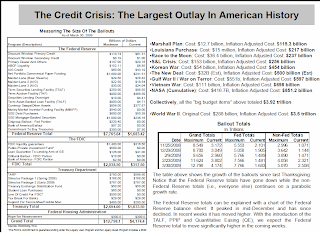Budi pense que le NYSE est devenu très dangereux, un marché très étrange, pour employer un euphémisme. Plusieurs commentateurs de la blogosphère financière l'ont remarqué: une énorme concentration des transactions sur 4 financières pourries: Citibank, AIG, Fannie Mae et Fredddy Mac durant tout le mois d'aout. Selon Brett Steenbarger, auteur de classiques sur la psychologie du trading et trader respecté
their composite volumes (their volumes traded across all exchanges) exceeded that of all other NYSE stock trading!
Qui fait quoi en ce moment? Il faut lire les deux posts que Steenbarger a consacré au phénomène sur son blog, Traderfeed,
le 29 et
le 30 de ce mois.. Budi se permet de citer la longue conclusion de l'auteur, plutôt inquiétante:
My best guess? We're seeing a massive infusion of capital into very troubled financial institutions, no doubt aided by short covering and the participation of program traders and proprietary daytrading firms. Where is the capital coming from? Why has it poured in so suddenly (the really large infusions began in early August)? Why is it coming in at such a pace that it is dominating NYSE volume? Zero Hedge rightly wonders why this hasn't triggered alarms at the exchange. And why is it happening with only the weakest financial institutions?
If you were the government and you saw that these institutions were on the verge of a major fail, with billions of taxpayer dollars at risk, I'm not sure you'd announce that to the world. Nor, at this point politically, could you ask for yet another bailout package. But you would only pour money into those stocks at a frantic pace (capable of detection) if you perceived a dire need for the capital.
I'm not inclined toward conspiracy theories, but it's difficult to imagine a scenario in which this is not a (frighteningly necessary) coordinated capital infusion, with taxpayer dollars ultimately at work in financial markets.



